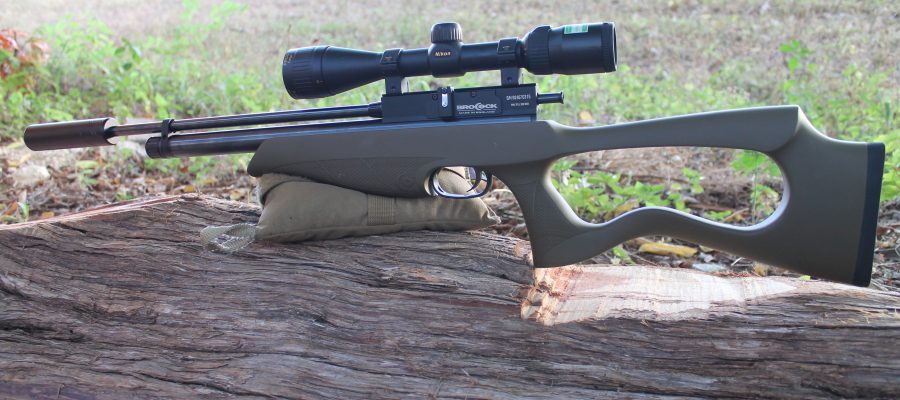
Call me old fashioned, but I like my rifles to take ammunition that contains all the parts necessary to make a projectile pop out the end of the barrel. You know, powder, primer, case, and all. So when our fearless leader handed me a package from Air Guns of Arizona that contained a Brocock Contour XL G6 and a carbon fiber wrapped air tank, I was…skeptical. As I live in the great state of Texas, there are little to no restrictions on what I might own, unlike the land that produced this little gem, the recently Brexited UK.
At a hair under five pounds (right at five with a scope), and a stock geared towards shooting offhand, the G6 is a handy little bugger that shoulders easily and fits well. The Monte Carlo cheekpiece brings the eye into position perfectly for use with an optic which is good since there are no iron sights to speak of.
Air Guns of Arizona was kind enough to equip this rifle with 3-9X Nikon and supplied me with some 14.66 and 16 grain projectiles. I was responsible for taking the carbon fiber tank to the local dive shop to get filled. Total cost – $10.
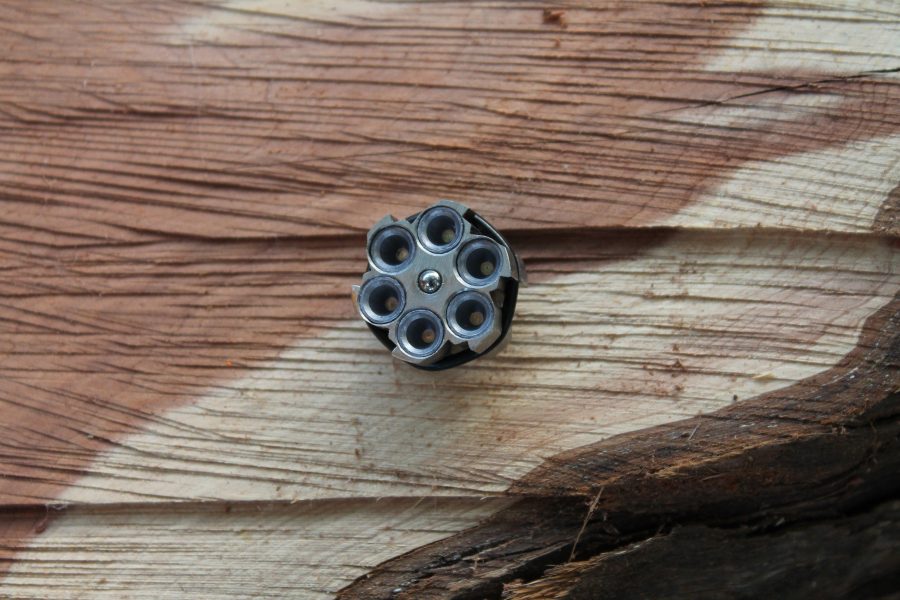
The G6 feeds from a six-round cylinder that accommodates all kinds of .22 caliber pellets, and holds them securely with an outer band. As there’s a ball detent on one side, the cylinder can only go in one way, and cycling the bolt moves the cylinder to the next position as you reload.
While it’s not semi auto by any stretch of the imagination, the short bolt throw, bolt lift, and polished feel contribute to very fast cycling. The only thing that slowed me down was the magazine’s proclivity for popping out of place slightly. Giving it a small tap to seat it fixed the issue every time, but it did limit my confidence on fast follow-up shots.
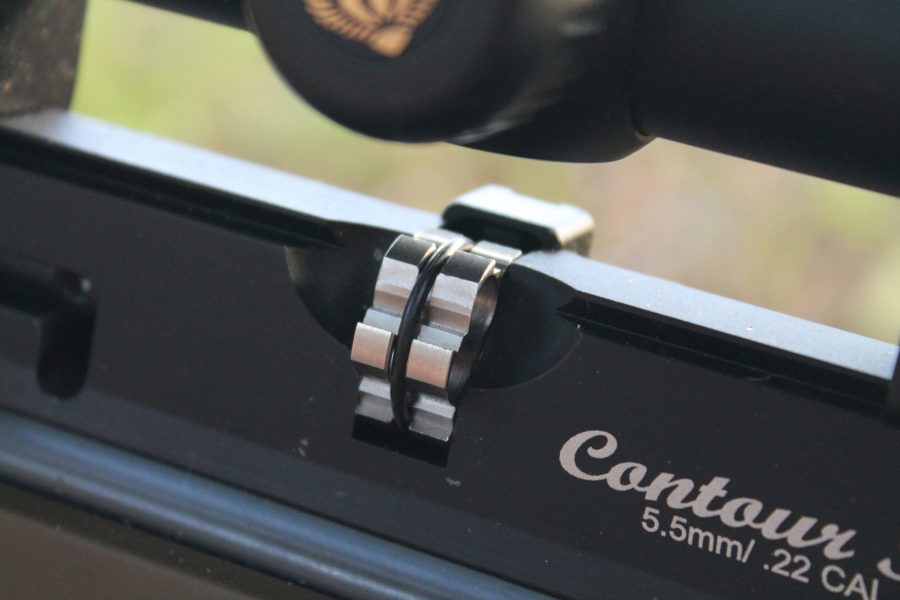
Where the G6 differs greatly from your run of the mill rimfire or centerfire rifle is that it lacks both a manual safety and the ability to extract an unfired pellet. This substantially changes the manual of arms to ensure safe operation. Where you can safely carry a bolt action rifle (excluding some Remington 700’s) around with the bolt closed on a live round and the safety on (just watch your muzzle), the G6 doesn’t have provisions for that sort of thing.
To safely carry this rifle, the bolt must be locked to the rear. Should you insert a pellet for firing, there’s no safe way to remove it without firing into a safe backstop. As the pellets are inert, you could reasonably argue that leaving one in the chamber with the bolt locked back is “safe enough” but there’s no good way to verify the chamber is clear like on a bolt action rifle, so you run the risk of a negligent discharge.
There are definitely safe ways to handle this rifle, but potential buyers should be aware that it will likely differ from their typical methods for safe handling.
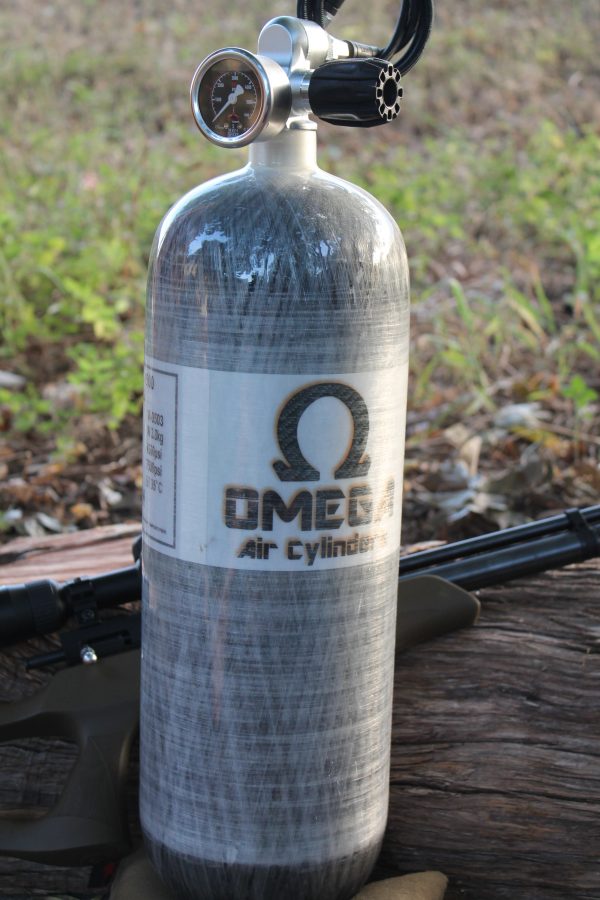
As the G6 contains an onboard air tank that takes charges directly from the much larger carbon fiber-wrapped air tank I alluded to earlier, capacity is somewhat limited. I found that the G6 would go from fully charged (200 bar/2900 psi) to completely dead in about 40 to 45 shots. But after about fifteen, the point of impact starts to shift so dramatically that you’ll be forced to hook the big tank back up to get things back up to working pressure.

With a freshly topped off tank and using my MagnetoSpeed v3, I saw velocities right around 875 fps with the 14.66 gr. pellets and slightly slower with the 16 gr. pills. That’s on par l with what I normally see from my .22 LR pistols albeit with heavier 40 gr. projectiles.
While I never took the G6 hunting, I did successfully put the hurt on various pieces of wood and found that the lighter projectiles on a full charge have enough juice to penetrate a piece of OSB, fiberglass insulation, and another piece of OSB before becoming wedged in a piece of cedar. I have no doubts that this rifle has the ability to make ethical kills on birds, rabbits, squirrels, and other small critters.
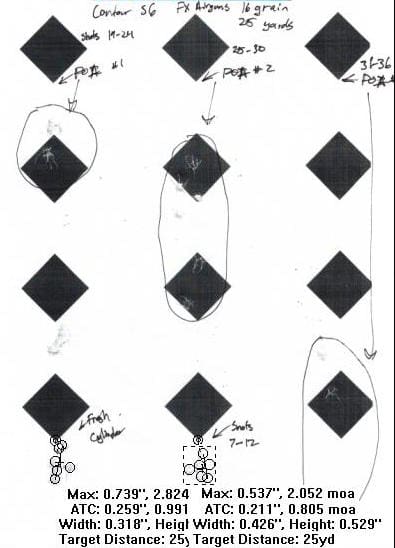
At the range, I was pleasantly surprised to see the level of accuracy displayed with either the 14.66 or 16 gr. projectiles. At 25 yards, the G6 consistently turned in six-shot groups that measured from half to three quarters of an inch. The groups on the target above were shot with the 16 gr. projectiles and show the drop-off in point of impact as air pressure decreases. The circled group at the top left is on shots 19-24 on a charge while 25-30 are the middle circled group, and 31-36 are the lowest circled group towards the bottom with the sixth shot actually falling off the paper. If you were planning on taking this afield without the air tank, know that you’re going to get about fifteen shots in before your point of impact will start to deviate substantially from point of aim.
The groups in the lower left corner are indicative of another behavior I regularly noticed. On a freshly filled tank, the first two shots would normally impact a touch high — stretching the group size to a max spread of three quarters of an inch. After those two, shots three through fifteen would bore a half-inch hole in whatever I happened to be shooting at. While I’m no air rifle master, this level of accuracy is what I’d expect out of any bolt action .22 rifle.
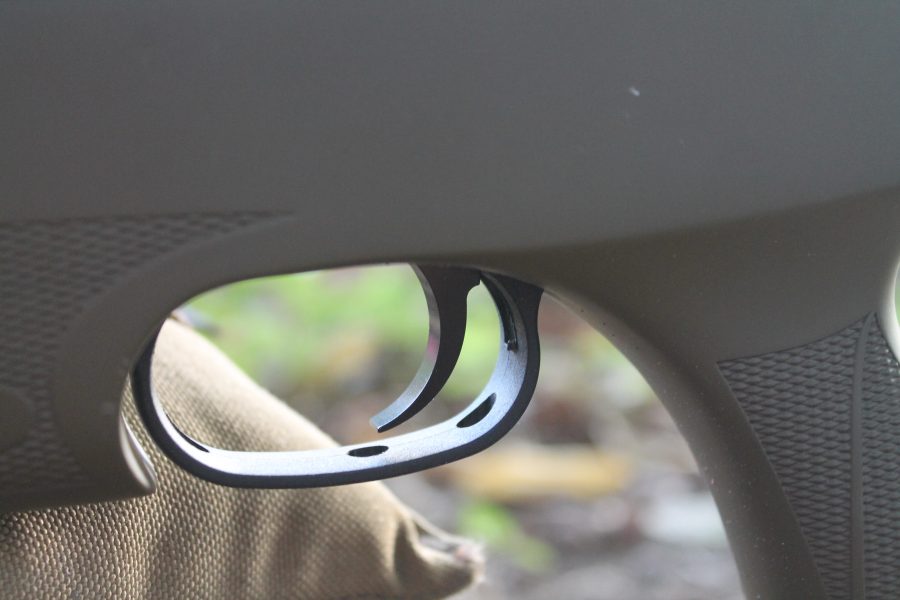
What was pleasantly surprising was the overall level of fit and finish the G6 brought to the table. I can’t be alone in thinking of air rifles as the sort of cheap, junky pump-up pellet guns of my youth. The G6, though, is finely assembled from snout to tail with nothing, and I mean nothing amiss.
Nowhere was this more evident than in the impressively crisp stock trigger. When testing triggers, I normally take ten readings or so with my pull weight gauge to establish an average. It’s not out of the norm to see the readings deviate from the average by two to four ounces in either direction.
The G6 trigger either registered 2-7/8 pounds or 3 pounds on the nose each and every time. The shoe is pleasantly shaped, and the break is phenomenally crisp after a short and very light take up. For those considering an air rifle for at-home practice, know that this trigger easily replicates the feel of many of the big dollar aftermarket triggers out there on the market.
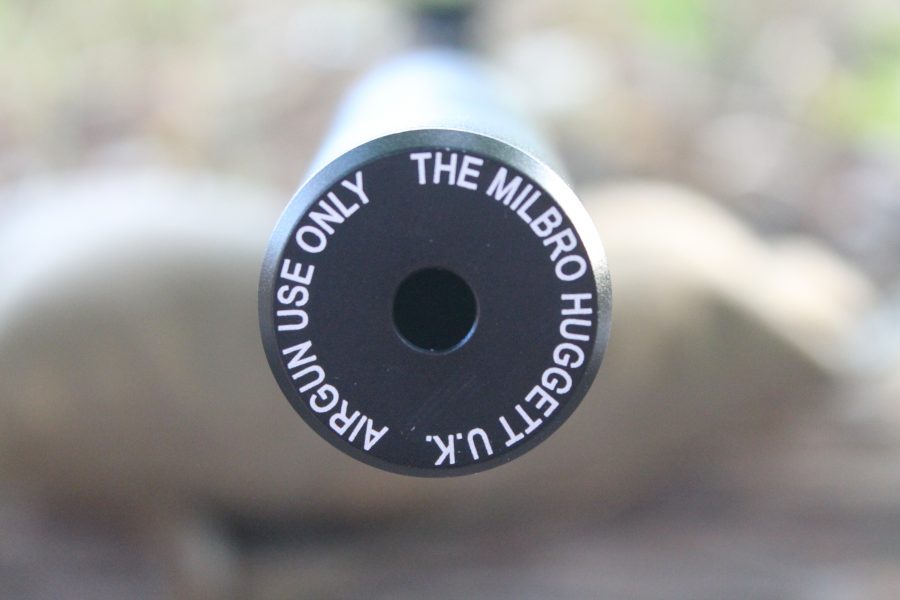
Which brings me to the question what nearly everyone asked me when they found out I had an air rifle to test. “Can you shoot it at home?” There are two schools of thought on that. The first: “It’s only a crime if you get caught.” That is to say, what you do indoors in the privacy of your own home is your business.
What I can tell you is that the combination of subsonic projectiles and the cute moderator on the end of the barrel make this a very quiet package. Very likely, the sound of a pellet hitting a hard backstop is going to be louder than the shot itself. Inside the confines of a house or garage, I doubt that your neighbors could hear you over the sounds of traffic, birds chirping, lawnmowers, dogs barking, or any of the other noises that suburbia has to offer.
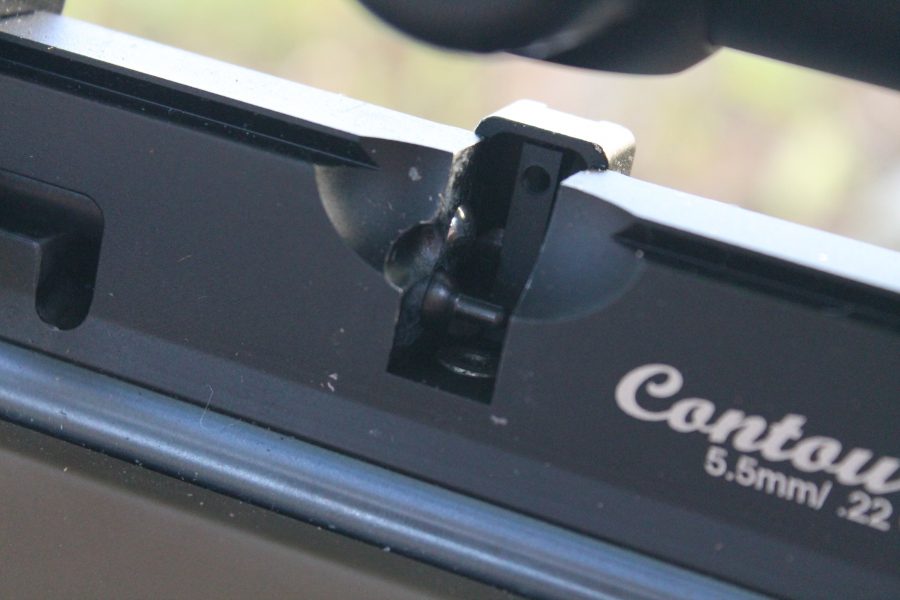
The second school of thought is to check your local regulations. Many don’t consider air rifles to be firearms and the regulations that govern them therefore don’t apply. If that’s the case, feel free to legally discharge your air rifle in the backyard or inside your garage. Just understand that the G6 is capable of powering through fairly stout barriers, so planning for a solid and safe backstop should be of chief importance. All four rules still very much apply.

At $740 for the rifle, about $200 for the scope and mounts, and nearly $600 for the air tank, owning an air rifle of this quality isn’t for the faint of heart or light of wallet. I consider part of my job in reviewing guns to ask “Who is this for?”
From a practical standpoint, my first thought was similar to the answer on reloading pistol ammo — those who shoot a lot and can treat the high cost of entry as an investment of sorts to be paid off within the span of a year or two. But at $0.03 per pellet and a couple pennies per air charge, you certainly won’t make up the cost on ammo vs. .22 LR (which currently runs about $0.07 – $0.08 per) unless you’re shooting something like 50,000 rounds a year or better.
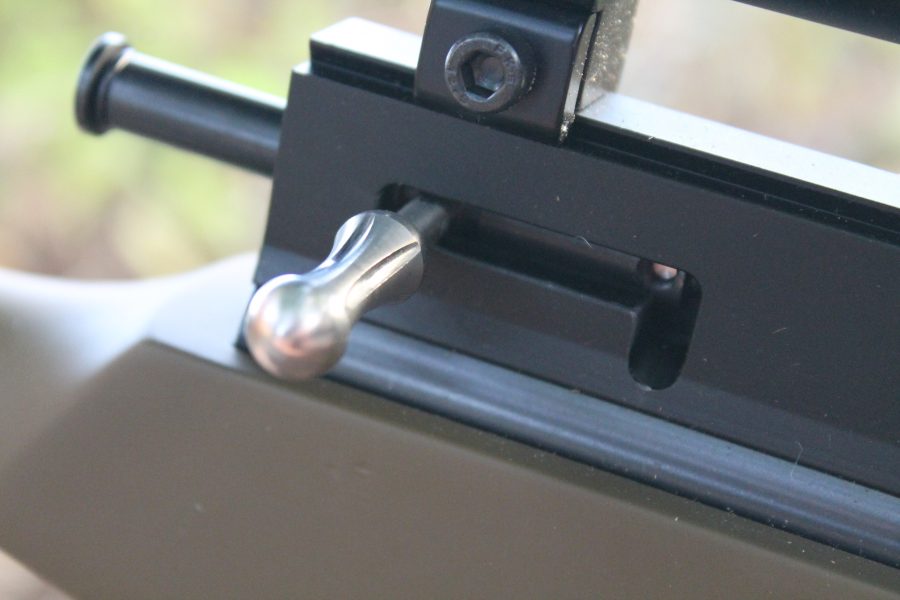
The second category of potential buyers is the group of people who have the indoor or outdoor space set up to shoot this rifle safely, but not a nearby range for practice. There’s really no replacement for live fire practice and if a round trip of an hour or more to the range has your rifle shooting hampered, you could easily replicate various shooting situations at home to keep the rust off your skills. This rifle holds about 2 MOA so reduced size target shooting should easily replicate some of the necessary skills that will help you as a centerfire rifle shooter.
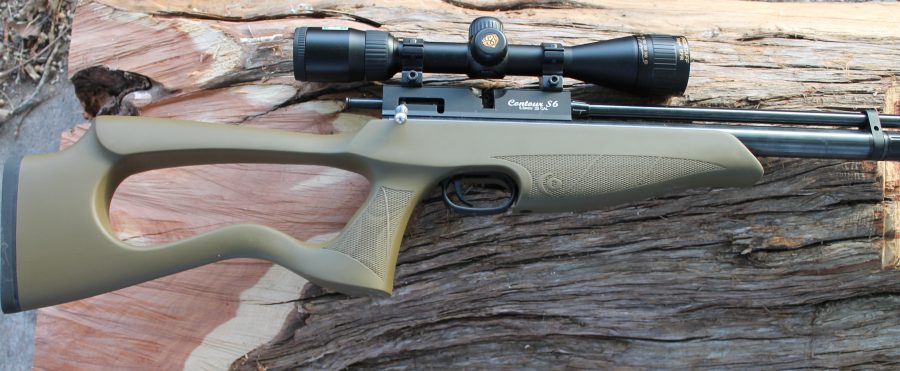
The last category of potential buyers (as I see it) is those who have grown bored with either hunting or long range shooting and are looking for a new challenge. While you can easily shoot a rabbit with a .22 rifle from fifty yards or more, you really need to be much closer with an air rifle to ensure an ethical kill.
I could see those looking to improve their fieldcraft enjoying the challenge that air gun hunting could bring to the table. On that note, the trajectory of these tiny pellets past the twenty-five yard mark turns parabolic pretty quickly. Shooting one at even 100 yards would be a worthy challenge, and at a nickel a pop, a fairly sustainable one as well.

Accuracy “issues” aside, I found this to be a thoroughly pleasant rifle to shoot offhand, seated, and kneeling. I had to shoot it off the bench for accuracy testing purposes which was a lot like work thanks to the rounded forend and short length of pull. Field accuracy was more than adequate for my needs, though it does require regular trips to the tank every fifteen shots or so to maintain that accuracy. Shooting it during the week between weekend range sessions could be an excellent way to keep the rust off those valuable rifleman’s skills.
The G6 pushes 14-16 gr. projectiles fast enough to be deadly to birds, mice, and small game at distances within 25 yards and has enough “oomph” to punch through OSB, plywood, and the like. Should you choose to buy one, know that it can do more than be a trainer in the garage, and could be the scourge of local pests.
The lack of manual safety or extractor presents a few issues. None are insurmountable, but worth noting. At this price point, plenty of rimfire manufacturers manage to make the safety thing happen, and I’d hope that Brocock could do the same.
Specifications: Brocock Contour XL G6
Caliber: 22
Weight: 4.8 lbs
Overall Length: 34.5″
Capacity: 6
MSRP: $739
Fit, Finish, & Build Quality * * * * *
At nearly $750, there’s a certain expectation of quality and I think the G6 measures up to similarly priced rifles that have been tested here. The stock, while not a Hogue, feels exactly like the Hogue OverMolded one that my Ruger 10/22 sports, and is nearly the same color. It has a pleasant feel and checkering in all the right places. The bluing on the barrel and onboard air tank is expertly finished with nary a sign of being anything other than perfect. The bolt moves smoothly through its short travel, and the trigger is one of the finest I’ve ever sampled.
Ergonomics * * * *
This stock gets high marks from me for being a “shooters” stock as it really does work with you for offhand shots and those typical of shots taken in the field. Due to the rounded and curvy forend, it does not play well with flat surfaces, preferring to list side to side like a cruise ship in heavy seas. Brocock did not see fit to fit this rifle with sling swivels, so fitting it with a bipod is out as well. That’s fine as this rifle is definitely geared towards the mobile shooter, one who doesn’t have the time to set up a shot with a bipod and a rear bag. That said, sling swivels would allow me to mount a sling, something I would definitely appreciate for offhand shooting. At a hair under six feet tall, I’m not giant, but the G6 felt like it was about half an inch too short in length of pull, similar to what I’ve experienced with AK-47’s and M4 type rifles with the stock in the compact position. Again, this is likely a nod to those who will shoot this rifle in an Isosceles stance.
Manual of Arms *
This isn’t a typical category seen on TTAG, but given that this rifle does not have provisions for a manual safety or extractor, something centerfire and rimfire shooters like me are accustomed to, it is worth noting. You cannot adopt the same bolt action manual of arms you use with your rifle today to this rifle and consider it safe. That said, this rifle offers a great deal of simplicity in its operation, so adapting to a different way of thinking shouldn’t be too difficult.
Accuracy * * * *
The five shot groups I put together at twenty-five yards after I’d shot the first two on a new charge were almost always half an inch in maximum spread if I did my part. The problem I could consistently replicate was that the first two almost always impacted a touch high. That said, this only opened up those groups to three quarters of an inch, more than adequate for small game hunting and general purpose target shooting. Should you require something more accurate, I’m certain that the folks at Airguns of Arizona would be happy to help you.
Overall Rating * * * *
At $739 for the rifle and a hair over $1500 as equipped above, this is definitely not the rifle for those looking to save some money on ammo. My math says you’d need to shoot something like 50,000 rounds to break even on this vs. the purchase of a bolt action .22 and the ammo to feed it (assuming you could find it). More likely, the buyer of this gun is someone looking to challenge their hunting and shooting skills or someone with an understanding municipality that allows them to practice in the backyard.




“Call me old fashioned, but I like my rifles to take ammunition that contains all the parts necessary to make a projectile pop out the end of the barrel. You know, powder, primer, case, and all.”
Dude that’s not old school! Thats new school in historical terms. Air guns and muzzle loaders are more old school!
Meh. A Benjamin Marauder is about half the price, and if you have it tuned/blueprinted by a qualified airgunsmith (about $75) and find the particular pellet it really likes it’ll give you far better accuracy.
But I do agree that a precision airgun is a great way to keep in practice and to learn to read the wind (at 50yards, even a light wind is going to move a .22 pellet quite a bit).
I have a 2014 Benjamin Marauder. Already has a de-pinger. The second generation Marauders are quite nice. I suppose if you are trying to squeeze every little bit out of a .25, sure why not. I went with a .22 as for my needs, a .22 was plenty.
Here’s a short video of my Marauder in use.
https://www.youtube.com/watch?v=G7rqzw1wz3g
I have a Gen 1 mRod that was massaged by a very talented guy . . . The trigger is now the best I have ever used on any gun, anywhere. Under 30 yards it is insanely accurate with H&N FTT pellets in 5.53 mm (read: ragged one hole patterns all day). The squirrels who raid my peach trees and tomatoes, and the rabbits who dare to predate my peas, collards, and sweet potatoes do seem to know that when it is near, certain death is in the air . . . .
My only lament is that it is damn heavy . . . Offhand shots require arms like Popeye.
So, the ‘moderator’ doesn’t qualify as an NFA toy?
And it ‘says’ airgun use only, but could it hypothetically handle ..22 short or CB?
Yeah it does matter. If it could be removed and used on a powder gun, even once and reduce noise, you could be in trouble.
There are tons of threads and blogs about airgun suppressors and the legality of them. I have a Marauder and it has a shrouded barrel. Very nice. Before I bought that, I was using a Sumatra 2500. It’s a real cannon but just loud as hell.
It’s as loud as a .22 rim-fire, just different. It doesn’t have the loud crack, more of a pow. I thought about getting a suppressor for it but there was no way around the fact that it would have been an NFA item. I did a lot of research on it. You just don’t want to leave yourself open for the gubermint to crawl up your ass. It’s just no fun.
In the long run, it was cheaper to buy a new air rifle with a shrouded barrel.
It’s a sticky wicket. A good discussion on the issues can be found here:
http://www.pyramydair.com/blog/2014/11/an-update-on-airgun-silencers/
http://www.pyramydair.com/article/Airgun_silencers_What_s_the_big_deal_August_2006/32
While the law is far from clear, the rule of thumb appears to be that *if* the moderator can be easily removed and used on a powderburner, it may well run afoul of the NFA. However, if it can’t readily be removed and used on a firearm (e.g., the integral barrel-shroud moderator on a Benjamin Marauder or an Air Force Talon SS, or *maybe* something that is pinned/welded to the airgun barrel), it appears to be OK.
As noted in the link, however, the law is far from clear, and never forget that we are dealing with the BATFE here. Also remember that some states (e.g., NJ) and municipalities have laws that treat airguns like firearms, and so their local law suppressor bans / restrictions may well reach airguns.
MEH is right, my 9 year old’s red rider bb gun kills doves and squirrells quickly and easily, albeit only up to about 20 feerlt, but the yard aint too big.
But … you’re gonna put your EYE out!
An airgun which does not require a dive shop (!) and maybe 50,000 pellets set aside seems like a reasonable prep for SHTF, but this does not even address that bill, much less fill it.
There are hand and foot pumps available, but it is a *lot* of work.
That air rifle Lewis and Clark used took 1,500 pump strokes to recharge…
Sorry for being that guy, but whenever I see an air rifle I remember that I own a 10/22.
This air rifle may make sense under UK laws and regs, but not in the free world.
I have to agree. A $100 used Marlin 60, or bolt action .22 is vastly preferable to this gun, for the majority of uses.
A $30 Crosman 760 works fine for an air/bb/pellet gun, when the .22 short is “too much firepower”.
I’ve got a Marlin 60, a bolt action .22, a .22 revolver, and a Crosman 760. Personally I’ve got no use for something like this.
I can see how it might be useful in the UK, where lowly peasants are strongly discouraged from owning real firearms.
Remember, a gun is just a tool. For backyard pest control, I wouldn’t use a .22 powder rifle. I wouldn’t use my AK.
I would grab the shrouded air rifle as that is just the tool for the purpose.
It’s the exact same reason I didn’t get a .25 air rifle. It was more than my needed purpose. It’s a mix of safety vs purpose.
Oh, there is a big difference in quality and performance between a cheap BB/pellet rifle and a quality air rifle. I have been shooting these things for decades. I have owned the cheap rifles. A quality PCP air rifle is much superior in every way to a cheap rifle. Again, it comes down to intended purpose.
For backyard pest control, I would still use a .22 LR rifle (if I lived in an unincorporated area where it was legal to shoot). The short/quiet rounds really are very quiet.
Since I live in town (where I cannot discharge a firearm), I probably could get in trouble for shooting one of these high powered airguns as well.
It just seems to me that the niche for this gun is very small, and it isn’t one that fits a need in my life.
@ Art out West
No the niche for them is not small. That’s why there are many many manufacturers who make them.
It’s quite OK to admit that you have limited experience with air rifles. Your comments make that abundantly clear.
I disagree. A good suppressed/shrouded .22 breakbarrel is an excellent small-game and training rifle, with extraordinarily cheap and available ammunition as well as a low cost of entry.
Or you could go the “manly” route…. suppressed 22LR.
Arguably quieter too. Airguns give off that sharp pop discharge.
Even for children or beginners, it’s best to have them shoot 22LR as their baseline.
They mentally take it more seriously also.
We are going the pellet gun route this small game season. Gas piston break barrel .177 cal. Lot cheaper than this and a whole lot less hassle.
We hunt public lands. First shot with a 12 ga or rifle and everything vacates for a mile around. The airguns are a lot quieter. And since we live in CA our rimfires are practically useless as hunting arms because of the non lead law.
And yes. Real hunting requires skills other than busting caps. The pellet guns make you sharpen your skill set.
Tyler Kee,
You want Old Fashioned?
On the Lewis and Clark Expedition one of those two actually killed a bear with an Air Rifle.
I presume it was a large caliber air rifle.
https://www.youtube.com/watch?v=-pqFyKh-rUI
Also here is a link to a Youtube video of The World’s Most Powerful Air Rifle shooting a concrete block.
https://www.youtube.com/watch?v=Tdvsv6cRacU
Check out the Youtube videos of the Air Guns at the Shot Show 2016 or
this vid at the European version of their Shot show called the
IWA 2016
https://www.youtube.com/watch?v=oXo8Ze-spPI
Those Electronic Controlled PCP Air Rifles are serious state-of-the-art.
https://www.youtube.com/watch?v=oXo8Ze-spPI
https://www.youtube.com/watch?v=Tdvsv6cRacU
Depending on the location and the type of game, and air rifle is the better choice of hunting weapon.
Many Air Rifles come with a Silencer that does NOT need and NFA certificate.
Sorry, with a name like that do you grab your buddy’s from the bath house and go shooting.
Cool looking bb gun.
Deducing from accuracy (on assumption that the gun was fired from the rest), the piece is either pellet-picky or might need some gunsmithing. Or simply very new. Factory Rainstorm II can deliver sub-MOA or 3 MOA groups, depending on pellet preference and quality.
Tank price is outrageous, I should say. It is lightweight CF and all, but that much money can buy nice Alu unit AND a PCP gun in other price range.
If the gun is so wildly inaccurate shot to shot, why didn’t they ship the gun with a regulator to keep the air pressure consistent? Especially since it’s running on compressed air instead of CO2, it shouldn’t be that difficult to keep the pressure consistent shot-to-shot.
You can typically run these guns off a standard cheap dive tank, so you can either run a full size tank for cheap, or get a womens/shorty tank and be a little more portable. Simply get a filler adapter and you can fill your rifle’s tank off that instead… much cheaper.
I for one happen to enjoy “cheap, junky pump-up pellet guns”
I have a Crosman 880 ($50 est.) that shoots 3/4-1″ 3-shot groups at 40 feet (that’s all the range the side of my house will accommodate) offhand with BBs no less and the cruddy ‘iron’ sights. Pellets pretty similar. I don’t think I’d try to take anything bigger than a squirrel with it, but mostly it makes a nice ‘ping!’ when I hit an AR-500 scrap plate.
This is a pretty cool, though horribly named (BRO COCK?? Really? Well this is from the country that sells ‘spotted dick’ in a can..) air-gun but hedges too much on my firearm budget for consideration.
I have a cheapie Gamo break barrel and it’s lots of fun to shoot. When there was no .22 long rifle ammo to be found post Sandy Hook, every Wally World still had plenty of .177 pellets. They weren’t the super high precision $20 a dozen pellets, but they let me punch holes in paper with my less than super high precision rifle and a good time was had by all. If you think .22 ammo is going away again an air rifle is an inexpensive alternative.
As quality air rifles go, this one is a special case, a compact carbine with a smaller than normal air reservoir. There are many more great PCP rifles with larger tanks that allow you 2-3x capacity. Also you really don’t need a $600 CF air tank… sure they are nice but a slightly heavier less expensive tank holds air too. Or you can pump. Or an air rifle with an onboard pump like the FX Indy. Or a good break barrel rifle.
And for goodness sake, Airguns of Arizona is the last place to purchase an airgun… they have horrible, rude service. Go with Pyramid Air or Precision, much nicer and competent people.
Suppressed Ruger 10/22 is cheaper and way more useful.
You should review the Air force Texan in .45 next.
http://www.airforceairguns.com/The-Texan-by-AirForce-Airguns-s/118.htm
there is a lot of mention of break barrel rifles in the comments here. while i would agree that spring piston air rifles offer a satisfying cost/ effectiveness balance, the side and underlever dianas ( for instance, rws 48 or 460) offer a fixed barrel. this may improve repeatable accuracy, coupled with the extra barrel length allowed by having the breech further back…
they can be found used on gunbroker and armslist.
I have a Brocock Concept s6 which is a cousin of this model ( they share the same mag) and a Benjamin Marauder 25 that is tuned. The Brocock is a better made gun in my opinion , don’t get me wrong the energy in ft pounds I get from the Benjamin is greater but the Brocock is a real tack driver. With the proper scope I can put all the 6 shots in one hole of the target smaller than a dime. It is surgical accuracy and with a TKO LDC is about a loud as a mouse fart.
Great-looking guns, too. I think the reason they’re not more popular is that when folks think “.22 PCP rifle” they’re also thinking “> 25 FPE” so they avoid it as underpowered.
If you love to wear polyester fabric jackets? so check Salt N Pepa Jacket which is a most selling outfit in our store, Shop now and get amazing discounts and offers.
Comments are closed.